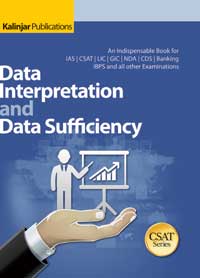(HOT) UPSC Current Affairs 2025 PDF
NEW! The Gist (NOV-2025) | E-BOOKS
CSAT: Background of Aptitude Test
Background of Aptitude Test
Ancient China was the first country in the world that implemented a nationwide Aptitude test, which was called the imperial examination. The main purpose of this examination was to select for able candidates for specific governmental positions. The imperial examination was established by the Sui Dynasty at 605 AD and was later abolished by the Qing Dynasty 1300 years later at 1905.
Types of Questions under Aptitude Tests:
Multiple choice: In a test that has items formatted as multiple choice questions, a candidate would be given a number of set answers for each question, and the candidate must choose which answer or group of answers is correct. There are two families of multiple choice questions. The first family is known as the True/False question and it requires a test taker to choose all answers that are appropriate. The second family is known as One-Best-Answer question and it requires a test taker to only one answer from a list of answers.
True/False: True/False questions present candidates with a binary choice - a statement is either true or false.
Matching: A matching item is an item that provides a defined term and requires a test taker is to match identifying characteristic to the correct term.
Fill-in-the-blank: A fill-in-the-blank item provides a test taker with identifying characteristics and requires the test taker to recall the correct them.
Mathematical questions: Most mathematics questions, or calculation questions from areas such as verbal and analytical reasoning employ a style , although some papers, notably the Maths Challenge questions are significant in multiple choice.
Editor, CSAT Comprehensive Guide (IAS Preliminary Paper-II)
UPSCPORTAL.COM






